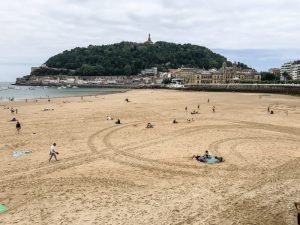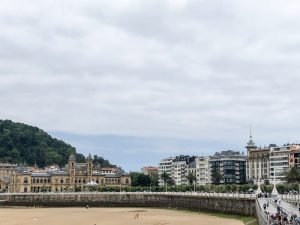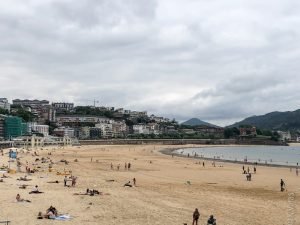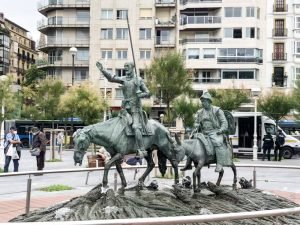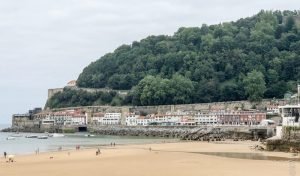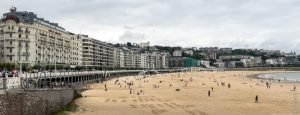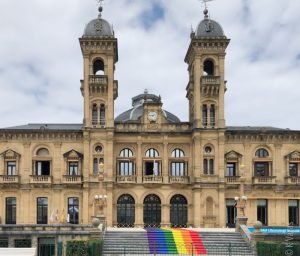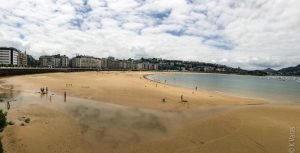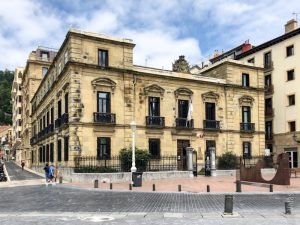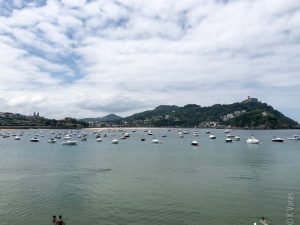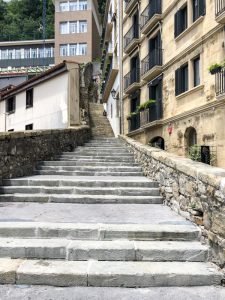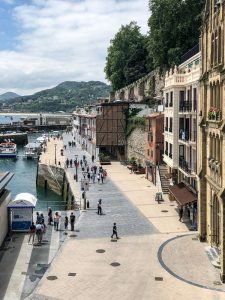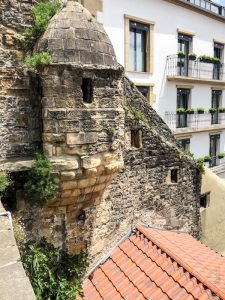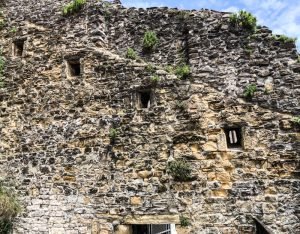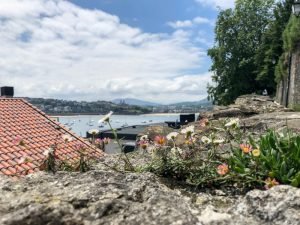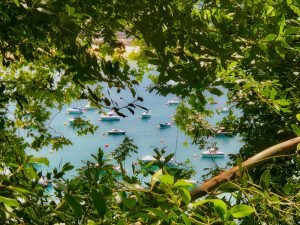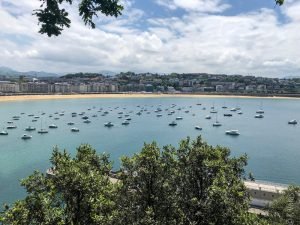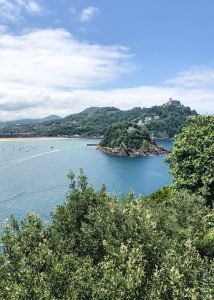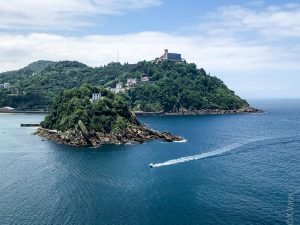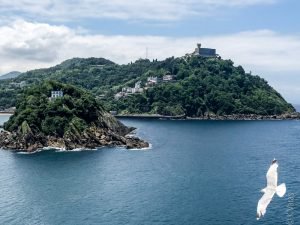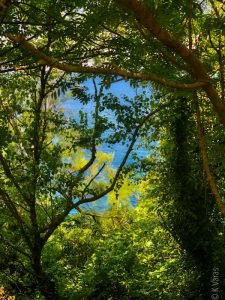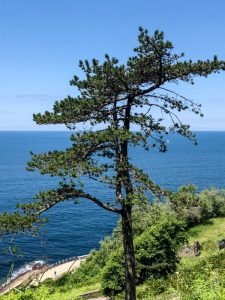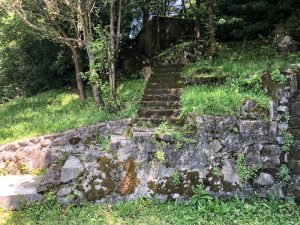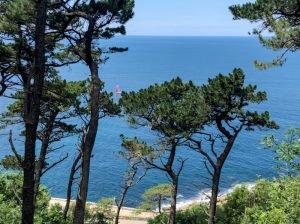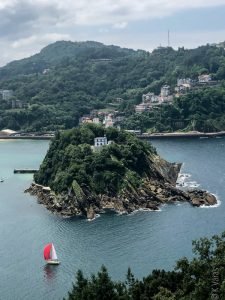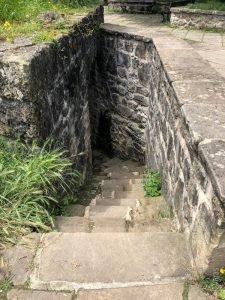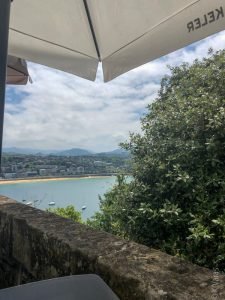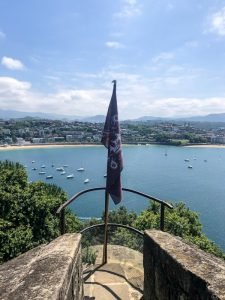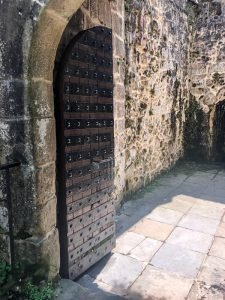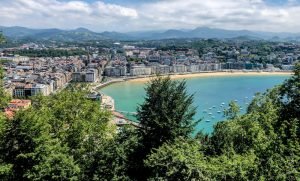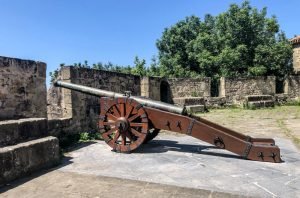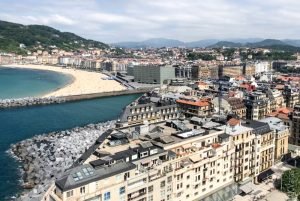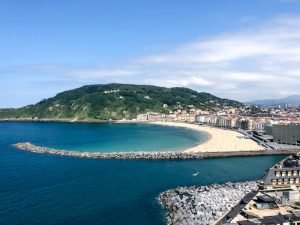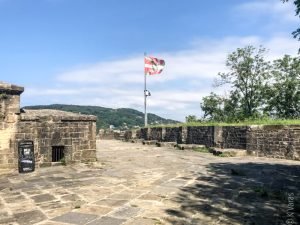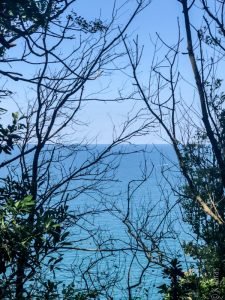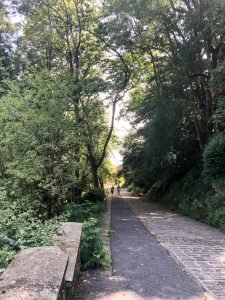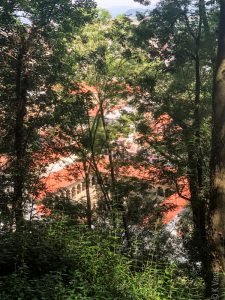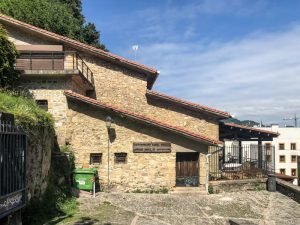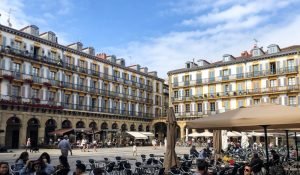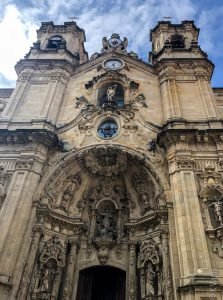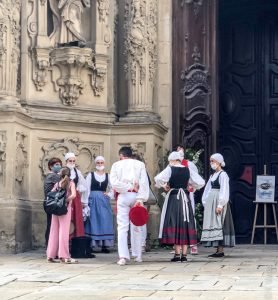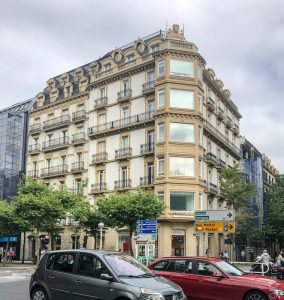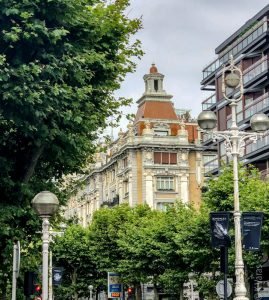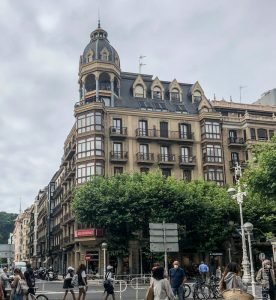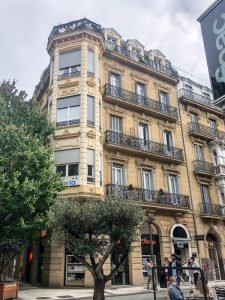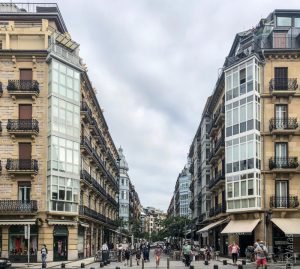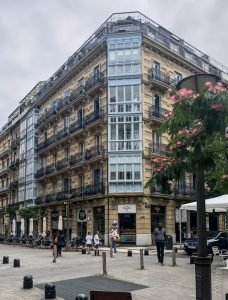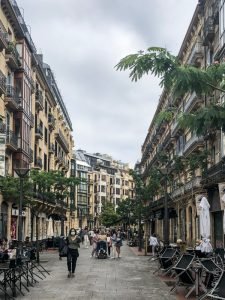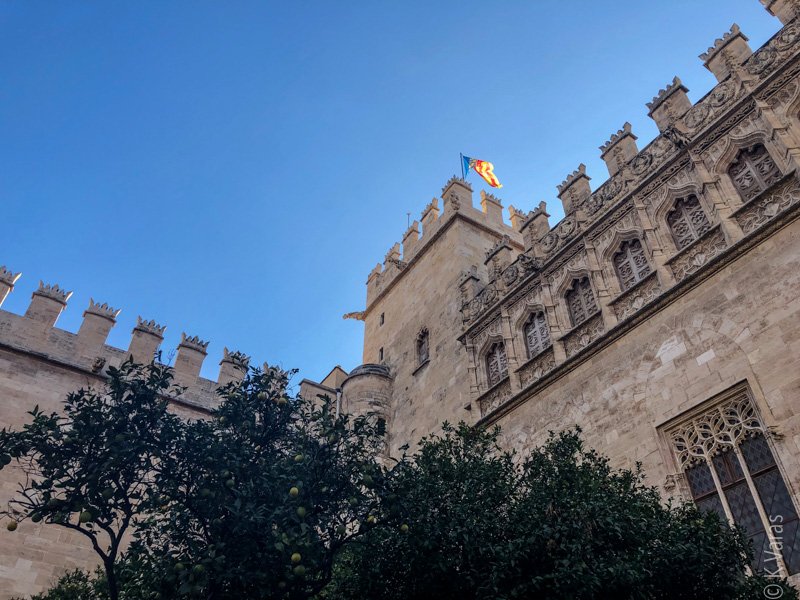
Donostia-San Sebastián
When people think of world-famous Spanish cities, the one that comes after Madrid and Barcelona is typically Donostia-San Sebastián; the consensus seems to be that this northern city in the Basque Country is one of the prettiest in the whole world. To say my expectations were raised would be an understatement though I can’t quite fathom why it took me so long to finally get there. Only a few days before my planned departure from Bilbao, I finally made it to this Jewel of the North (yeah, I know that’s what I called Santander too, but that was before I had seen San Sebastián). In my mind they’re both very, very lovely.
I may have already mentioned Google’s (Maps and otherwise) seeming inability to find train routes for me and even the Renfe site has been terribly unhelpful lately, so imagine my surprise to find that there is a local (cercanías) train that goes to D-SS and not only I can use my Barik card (local transit card) on it but it’s also really cheap, as in less that 4€ each way! Granted, the train stops in every little town and village on the way and the trip lasts over two hours but I wasn’t about to complain — the vistas around here are usually so wonderful that chilling for a couple of hours on a train just wasn’t going to be a big deal.
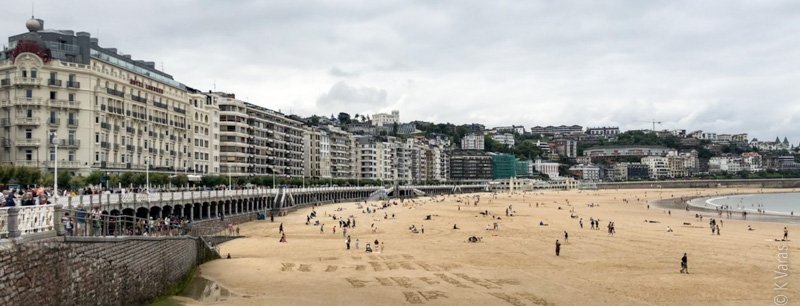
I arrived in D-SS at a good time for a meal and quickly dealt with that. Later I wished I had eaten more than a couple small breakfast pintxos but how was I supposed to have known I was going to spend most of the day hiking up and down a big hill? 20-20 hindsight is so annoying. But first I explored the heart of the famous Bahía de La Concha waterfront, home to the chic-est of chic hotels, restaurants, and other places where one must be seen. The beach itself is beautiful, large, and normally full of people. I’m sure what I saw was a fraction of the crowds normally sprawled upon the sand here though there were a lot of people just walking around the boulevard, enjoying the spectacular views.
Donostia-San Sebastián (the custom of using both Euskara and Spanish names is strong here so I will try to just refer to it as D-SS to save keystrokes — after all, I do have a lot to write still). The city lies northeast of Bilbao, only about 20 km from the French border. In pre-Covid days, it was common to go on daily tours of the coast that included the French town of Biarritz, another hot spot for the rich and famous. Its beginnings as a human settlement go back to prehistoric times with evidence of humans (and I mean Homo sapiens) being here as early as 24,000 to 22,000 BCE. Romans came here too, of course–they did get around a lot–but after a quiet period (i.e. few historical records), the monastery of St. Sebastián was donated to the Abbey of Leire by Sancho III of Pamplona in 1014 which is the earliest connection to Spain on record (thank you Wikipedia). Historically, San Sebastián was definitely a favourite of the Spanish royalty, and its proximity to France made it a frequent site of various sieges and battles. Interestingly, San Sebastián was one of the earliest towns hit by the 1918 influenza epidemic, brought to its shores by the American navy ships. Yes, the “Spanish Flu” was really an American flu but as history teaches us, early propaganda and, often, unfortunate PR, is what is remembered, facts be damned. Throughout its turbulent history, Donostia-San Sebastián has undergone many changes, some for good, many for bad, but in the end, over the last thirty years or so, major rejuvenation and restoration projects were undertaken and what we have now is a first-class, nay, a world-class city that people from all over the world flock to, and not just for the famous San Sebastián International Film Festival (since 1953). Today, there is little industry beyond tourism and arts and entertainment here but that is enough; I doubt any of the locals are complaining.
As most tourists here I was drawn to the waterfront, where I found a large garden (Alderdi Eder parkea) and the San Sebastián City Hall (Donostiako Udala) with its proudly displayed Pride flag on the doorsteps. The old town is just steps away so I detoured there a little but some unseen force was pulling me up towards the hill that looms over it. I really should call it “mountain” because it’s definitely higher than it looks and its name sounds like a keep in Gondor or Smog’s lair (of Middle Earth and LotR fame): Mount Urgull. As I climbed and climbed, I was constantly looking back towards the beach and the city as it lay beneath me, exposing more and more of its beauty to me as I reached higher viewpoints. It really was quite stunning. I particularly liked the multitude of boats tied up in front of the main beach. I am so used to seeing boats and yachts in marinas — and I have seen some huge ones here in Spain– but there is something special (and very romantic) about seeing them all just bobbing up and down in the calm waves of the bay.

I continued my climb. Once I got some distance above the old port below me, I came across the Batería Damen with some cannons pointing, strangely enough, back at the city. The higher I went, the greener it got and the fewer people I saw. That is not a complaint, of course, I enjoy sharing paths with no-one but it does get a little creepy when I find myself in a large, semi-wild park. To make it even more creepy, there seemed to be signs of long-gone stairs and terraces, all belonging to some grand palace that no longer was and hadn’t been in a long time. Fortunately the resident cats were keeping me company and once I spotted what surely had to be a restaurant or bar among the ruins higher up, I felt better and also had a destination. Climbing is very thirsty work. I finally reached the top (sort of) and the ruins of the Motako gaztelua, the XII century walled keep (see!) with more cannons, a small museum, and amazing views. The peak also gave access to an old part of the castle where some enterprising folks set up a bar serving very cold beverages and some food. I grabbed a table, got myself a clara, and settled in for a little rest while enjoying the incredible views of the city, Isla de Santa Clara, and the peninsula across the bay. Did I mention the view was spectacular? Yeah, sorry, not sorry. Mount Urgull may have an ominous name but its views are nothing but.

Somewhat refreshed, I took a closer look at the remnants of the castle, a castle which, to be honest, had little familiarity to the stairs and terraces I saw below. Those would fit better at a site of a palace and not a medieval keep, so maybe there used to be something else here but I’ve yet to uncover the information. Thinking I was done with Urgull, I started looking for a way back into the old town but somehow the paths on this mountains did a Hogwarts-like path swap on me and I promptly got a bit turned around. I wasn’t really lost (that’s not an easy thing for me to do), but I did manage to take a slightly longer way back down than I planned. I also seemed to be going down the less-travelled route, i.e. behind some interesting buildings like the Euskadi Institute of Architecture and the Cofradía Vasca de Gastronomía (The Basque Brotherhood of Gastronomy HQ), but soon I found myself behind the old port and just where I intended to be in the first place. Yeah, I don’t know how I always manage to do that but I’m sure glad my internal compass usually gets me to where I need to be well enough. What I found amusing (especially after spending a lot of time by the Mediterranean) was the fact that the magical beach, La Concha, managed to do a disappearing act itself: I’ve forgotten what tides do to beaches and nowhere was this more noticeable than here. Compare the early beach pictures in the Gallery and the later ones. It sure made me wonder where would all the beach-goers go on a busy summer day? Would they just move their little umbrellas and towels to the waterfront parks? Maybe that is why there were so few earlier in the day? Beach day sure is a lot shorter here than in the south, that’s for sure.
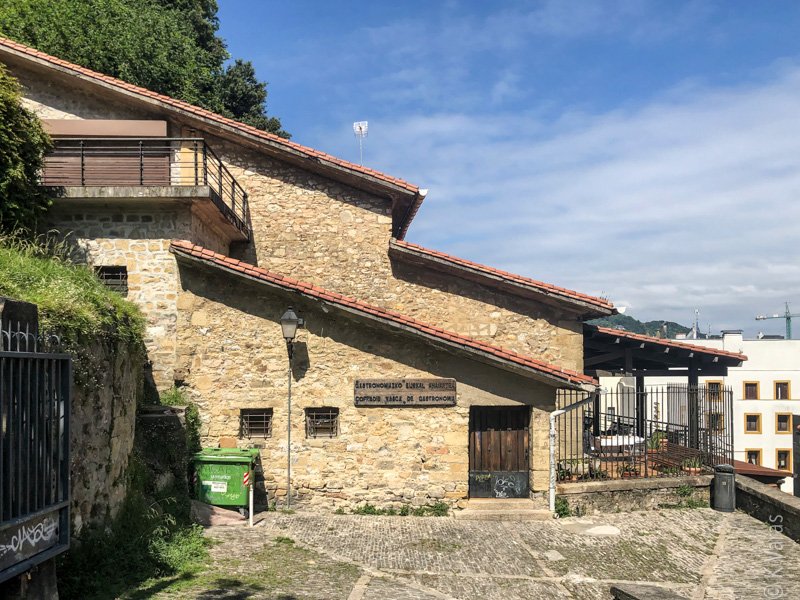
Donostia-San Sebastián’s Casco Viejo (Old Town) is not big and pretty much as you’d expect: there is a main square (Plaza de Constitución), a big church (Koruko Andre Mariaren basilika, so, in this case, not a cathedral but a basilica and therefore more important), and some narrow streets full of restaurants and little shops. I was getting a little hungry at this point (I only drank on the Mount, food choices having been limited, at least for my palate), I started wondering back and forth along said streets when I noticed some strangely dressed people next to the main entrance of the Basilica. Being fascinated by the building I zoomed in for a closer look and then I spotted a fancy car (and driver) waiting on the side. That’s when the lightbulb went off in my head: a wedding! As a crowd appeared to be growing I decided to plant myself right in front, grumbling tummy notwithstanding, and settled in to wait until the happy couple came out. I had no idea what the traditionally-dressed people were going to do but whatever it was, I was going to be there to see it. I didn’t have to wait long as the wedding guests spilled out of the church and crowded on each side of the doors. The dancers positioned themselves immediately in front of the doors. A few minutes later, the newlyweds stepped out and I (and everyone else who was in the vicinity, and there were quite a few of us) got to enjoy a joyful traditional dance of the Euskadi people, Aurresku, accompanied by a woman playing on some strange wind instrument and someone on a drum. As I write this (and rewatch the video), I still get goosebumps; being able to witness this event will stay in my memory forever and is probably my most favourite moment of this whole year.
I would have loved to smack that one tourist who just had to get in close and block everyone’s view but I let it go. I didn’t stick around long after the dance and went searching for food, which wasn’t memorable (spoiled for choice but couldn’t decide–sometimes eating alone can be a real drag). I walked back to the train station admiring the local architecture and the actual cathedral, a beautiful if rather imposing Artzain Onaren Katedrala (Good Shepherd of San Sebastian Cathedral). The long train ride home was made somewhat more painful by a very large group of adolescents who got on too early and got off too late but at least I had my fellow annoyed passengers to share knowing looks with. I guess I must be getting old(er) and less tolerant of misbehaving youths — next time I will look into taking a faster train 😉.
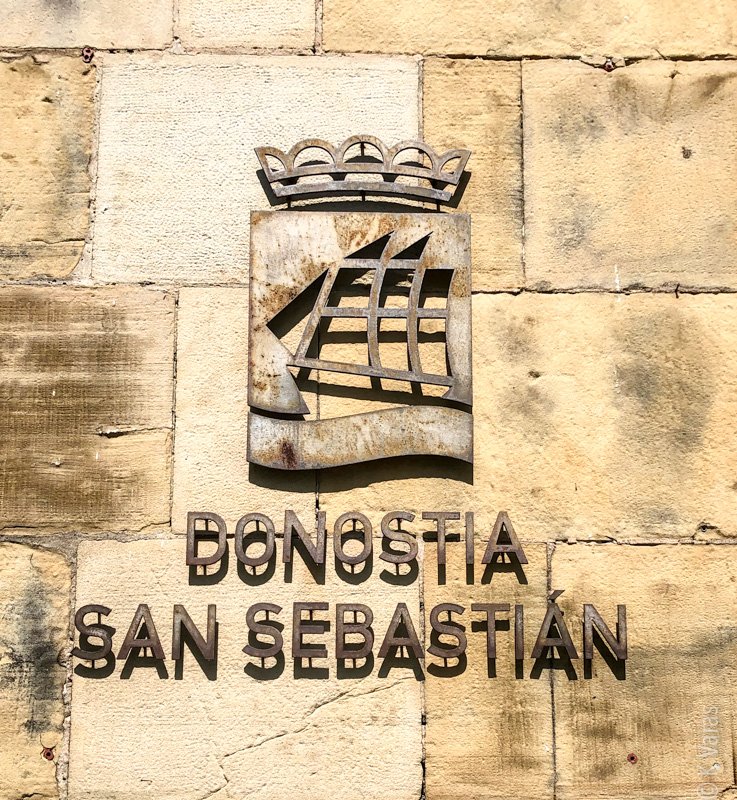
To sum up, here is my honest opinion about the city: the views from Mount Urgull were stunning in every direction; from that point of view Donostia-San Sebastián was truly beautiful. The Old Town was very nice and offered a wonderful surprise though clearly that was not something one can expect on every visit. What I felt in the city itself, however, was not what I had expected. It’s a little difficult to put my impressions into words, to be honest; perhaps I had expected a different urban feel, something special. Perhaps my expectations were raised by the exuberant descriptions of it. Frankly, I found it cold and not terribly welcoming; a city for rich people to come and be seen, and a city for those who like to come and see those rich people. Does that even make sense? See, it’s hard to explain. All I know is that as lovely as it was to look at, I would never, not even for a second, think I could actually live in it. Weird, no? That said, I will definitely go back to see more as there were whole swaths of the landscape I failed to visit and so many amazing restaurants I’d like to eat at (but not alone). I would also love to come for the Film Festival though not just because a bunch of famous people come to it; because I am a huge movie buff, it would be fun to go and see something so special at least once in my life. For the record, I feel the same about Cannes and Sundance.



